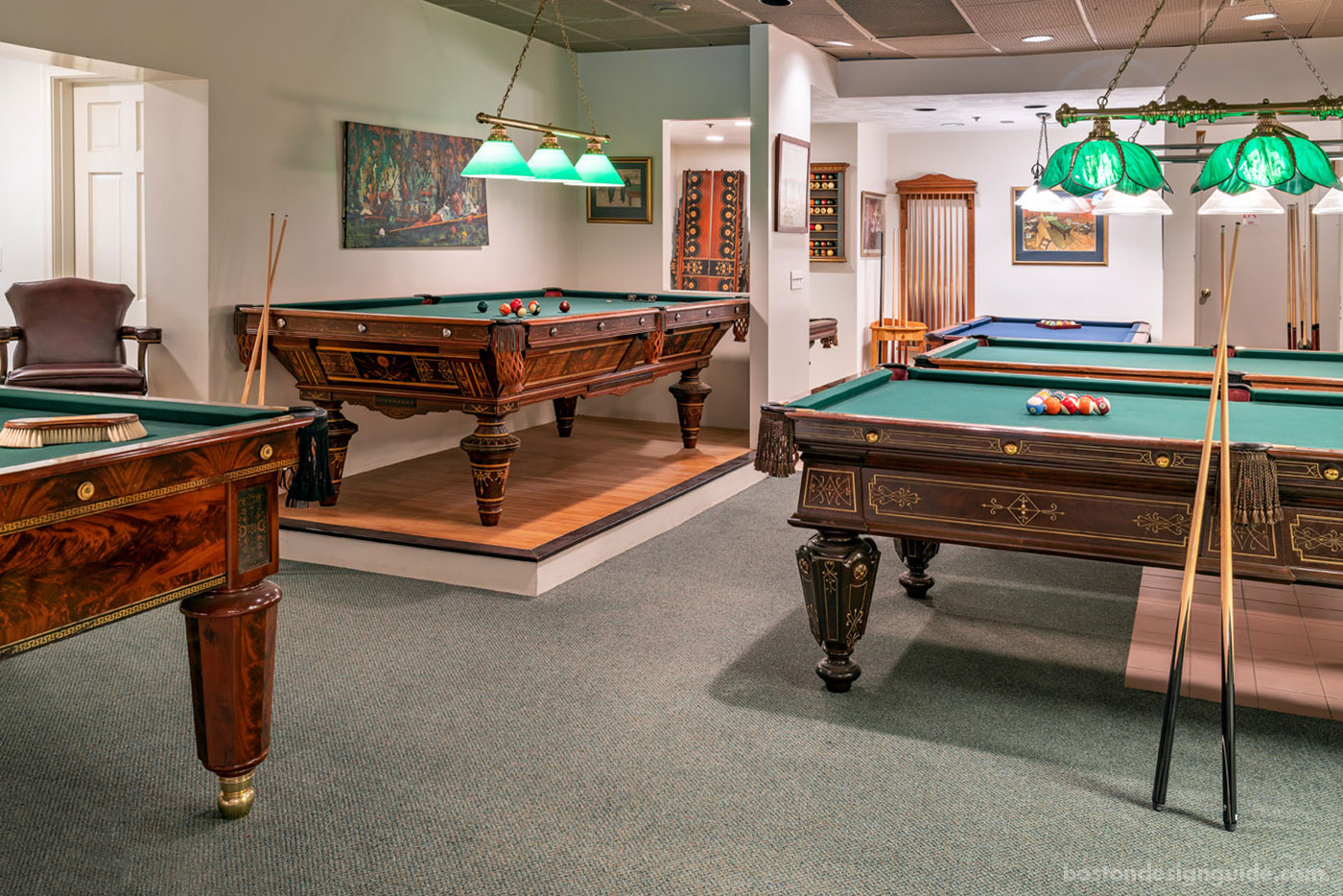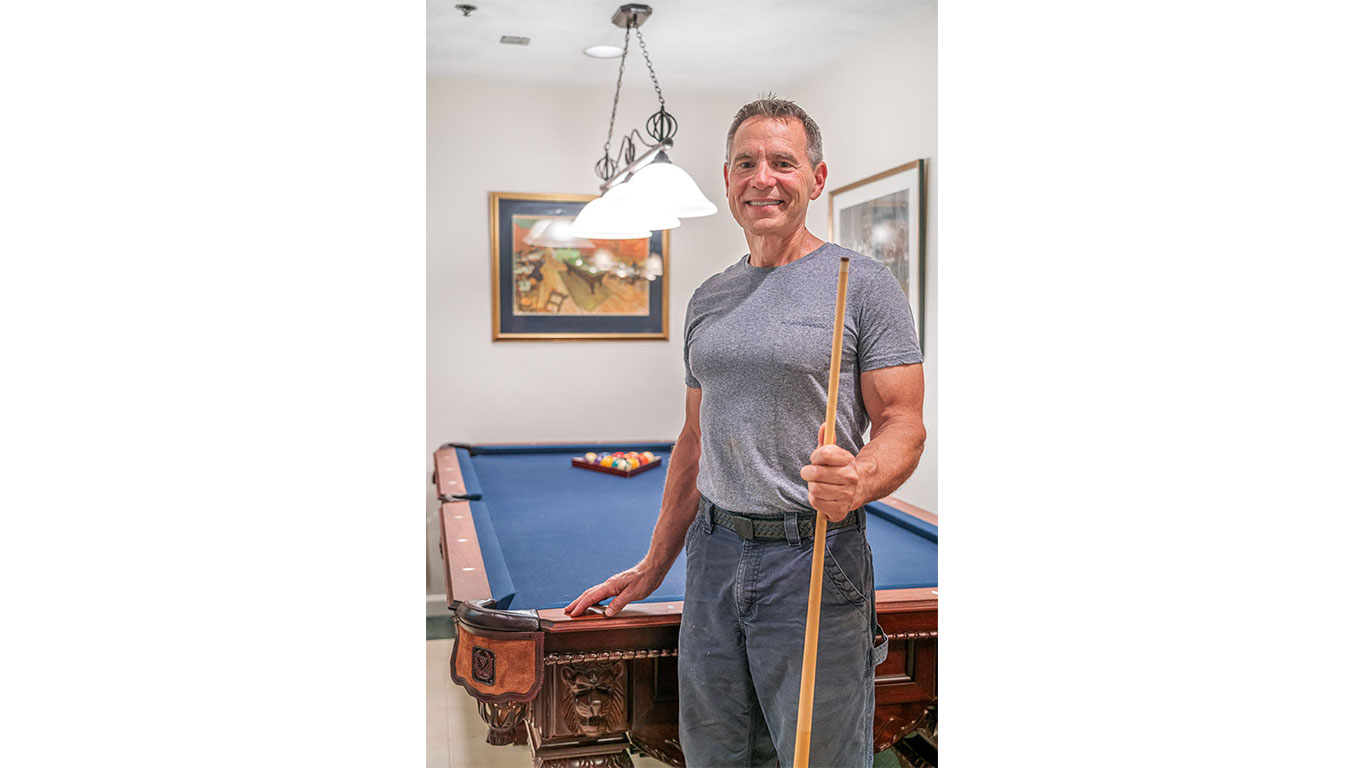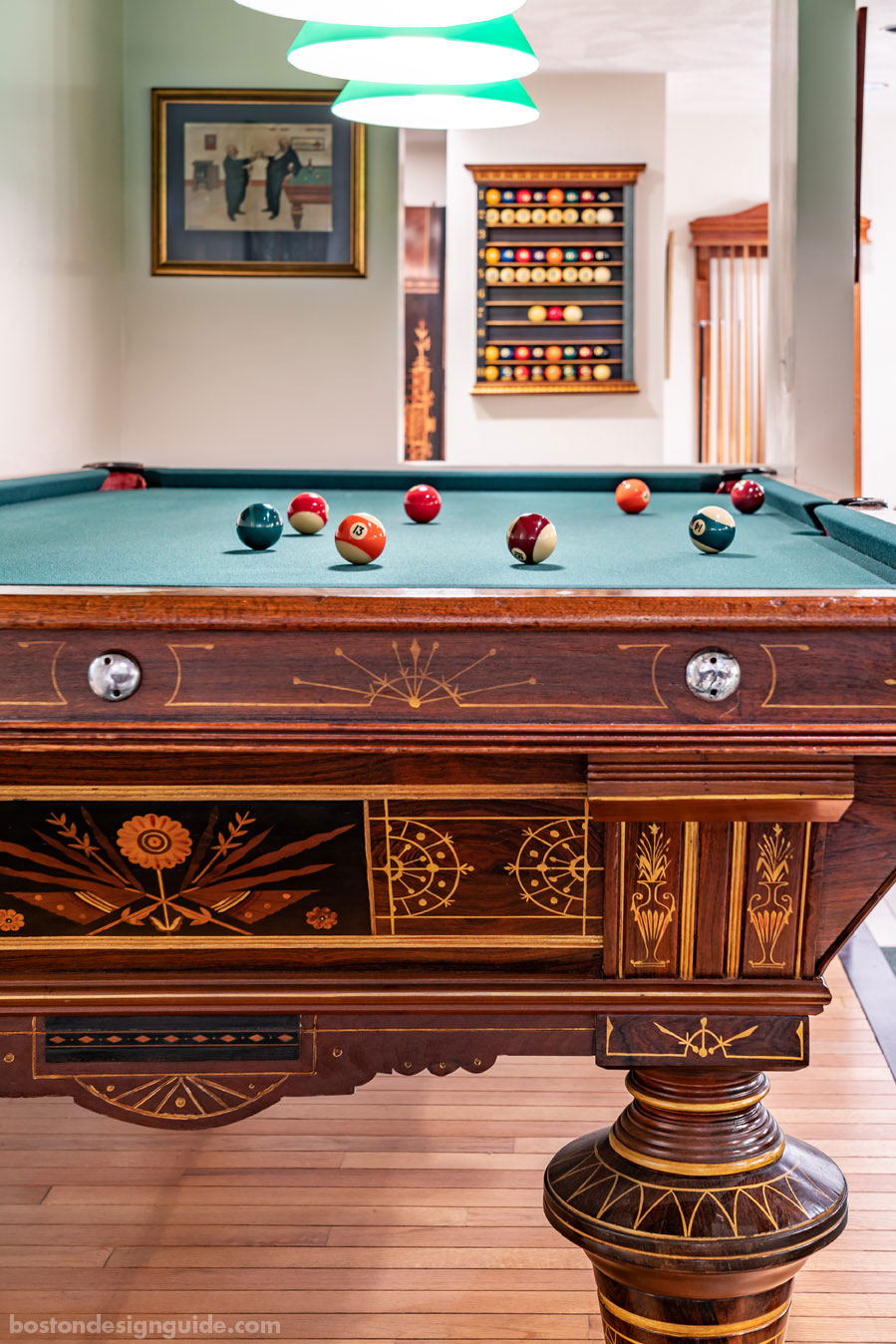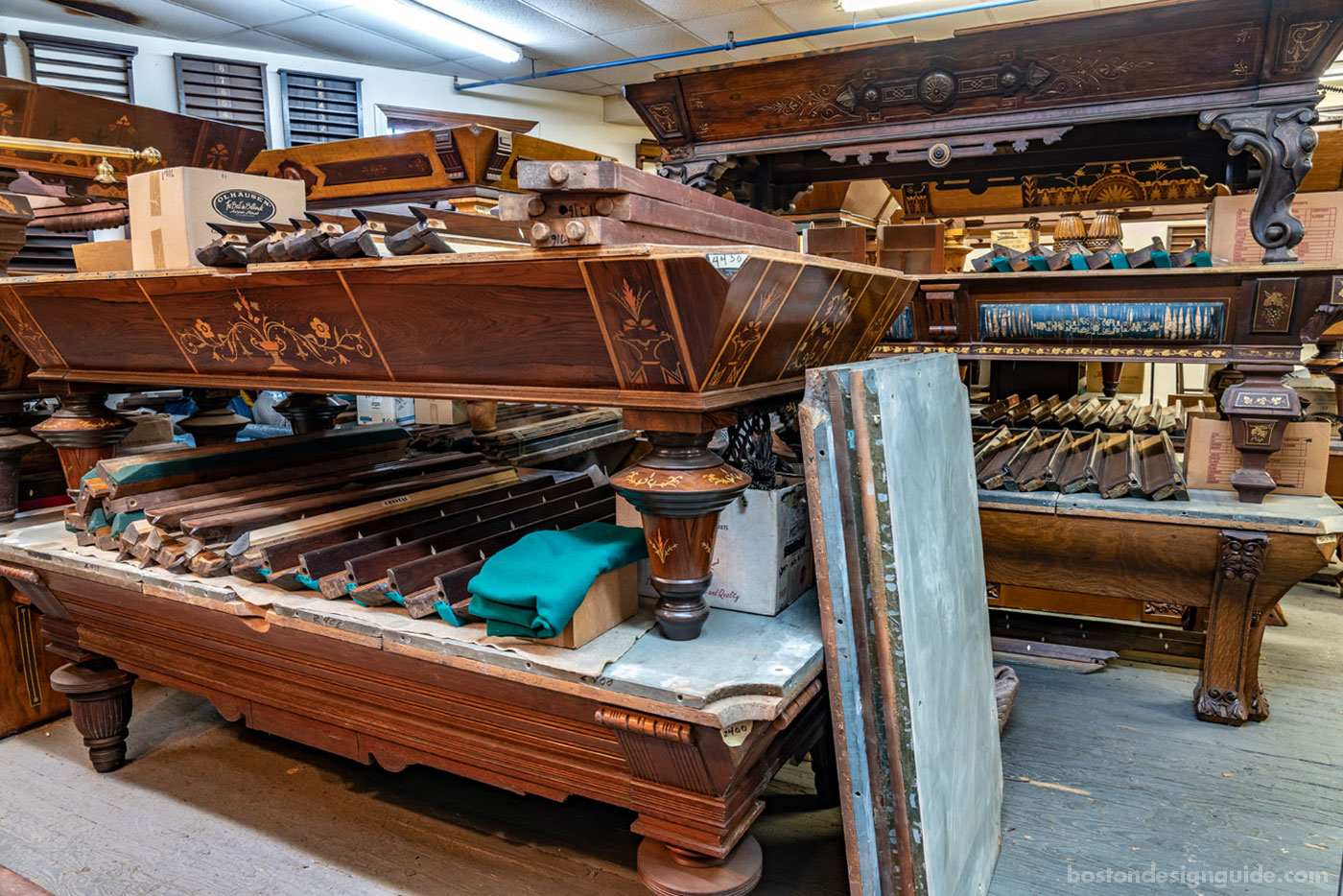November 24, 2020 | Sandy Giardi

Walking in to Boston Billiard Emporium is like stepping back in time. Inside the Somerville showroom, which has been in business since 1972, is a far-reaching lair comprised of antique and used tables, reproductions, new billiard tables and accessories.
Owner Stephen Kelly is doing his part to keep the lost art alive. He started working for Boston Billiard Emporium in high school in 1975, when he was hired to haul tables out of a poolroom in the Combat Zone, and carry 300-pound slates, with the help of a few others, over to the shop.

Owner Stephen Kelly
Kelly bought the company in 1979 and changed the business trajectory, turning his attention to restoring antique tables and refinishing used ones. He has made a career of coaxing the intricate inlays, stenciling, and rich wood detailing from these prized tables and returning them to their original luster.
While “the market for antique tables is depressed right now,” says Kelly, they are more than deserving of attention—and respect. These tables—from the likes of Brunswick, The John N. Reiger Company Boston and J.E. Came & Co. Boston—are impeccably built, with quality you don't see today. “You could buy a table from 1860 and, once it’s restored, it is going to last another 160 years,” says Kelly. Kelly and his restoration staff don’t just scratch the surface. Theirs is painstaking work that unfolds over months, where they remove dirt and years of unwanted layers that hide the original finish, and, oftentimes, exquisite design detailing.

During these unprecedented times, when people are turning to their own homes for recreation, Boston Billiard Emporium has been selling a lot of new tables, and repairing used ones. An immaculate shop in the back of the establishment has tables in various stages of repair. “If something is broken, like a rail or a piece of a table leg, we’ll make the piece ourselves,” says Kelly, “and we’ll be sensitive to the species of wood (from maple and ash to mahogany and walnut) and the structure.” Boston Billiard Emporium will also fixes cloths, rails, silk and cording, pockets and more.

Kelly has a wealth of knowledge, and is happy to share his passion for the game and its wares. His wisdom spans the ages. During our visit, he showed us a mace (the cue-stick’s predecessor) that hails from the late 1700s, and informed us that homeowners today can transform their billiard table into a dining table if they’re short on living space. We were even schooled on the differences between Straight Pool, Carom Billiards, Pool or Pocket Billiards and Snooker. Head in to discover Boston Billiard Emporium for yourself—it is a one-of-kind business and a New England gem.
What’s In A Name?
There are different games and different tables for cue sports….
Straight Pool—“This is the main pool game you can play,” says Kelly, “where you rack up the 15 balls and shoot any ball you want.” You get a point for any ball you put in. If you’re a professional player and can control the cue ball, you can make quite a run. “Willie Mosconi holds the world record for putting in 526 balls without missing,” notes Kelly.
Carom Billiards—“This game is what most people think of as billiards,” says Kelly, and uses a cloth-covered table with no pockets. The balls have to “carom” (meaning to strike or to glance) off the rails and one another to score points.
Pool—This is an American game that uses pockets, aptly called Pocket Billiards. “Pocket billiard tables are what most people would call pool tables,” says Kelly.
Snooker—Popular in Canada, England and Ireland, Snooker uses a larger table at 6 X 12 feet and has smaller balls and pockets than what we see here in the U.S.
Boston Billiard Emporium, located at 343 Medford St., in Somerville, is primarily open by appointment, call 617-702-4074 or visit bostonbilliards.net to learn more.
Photography by Warren Patterson

